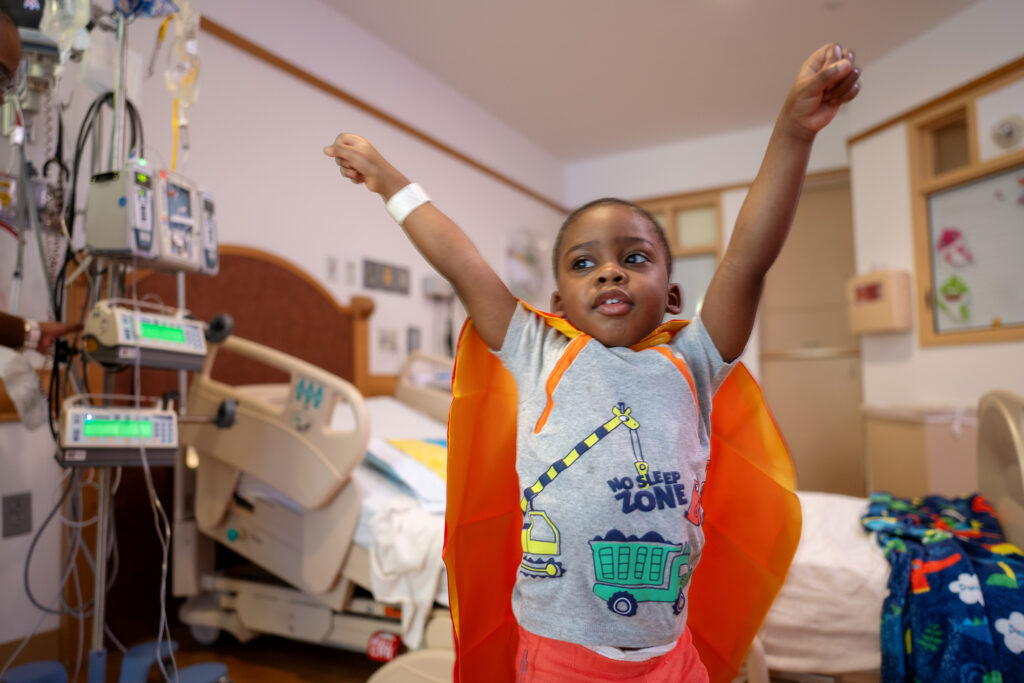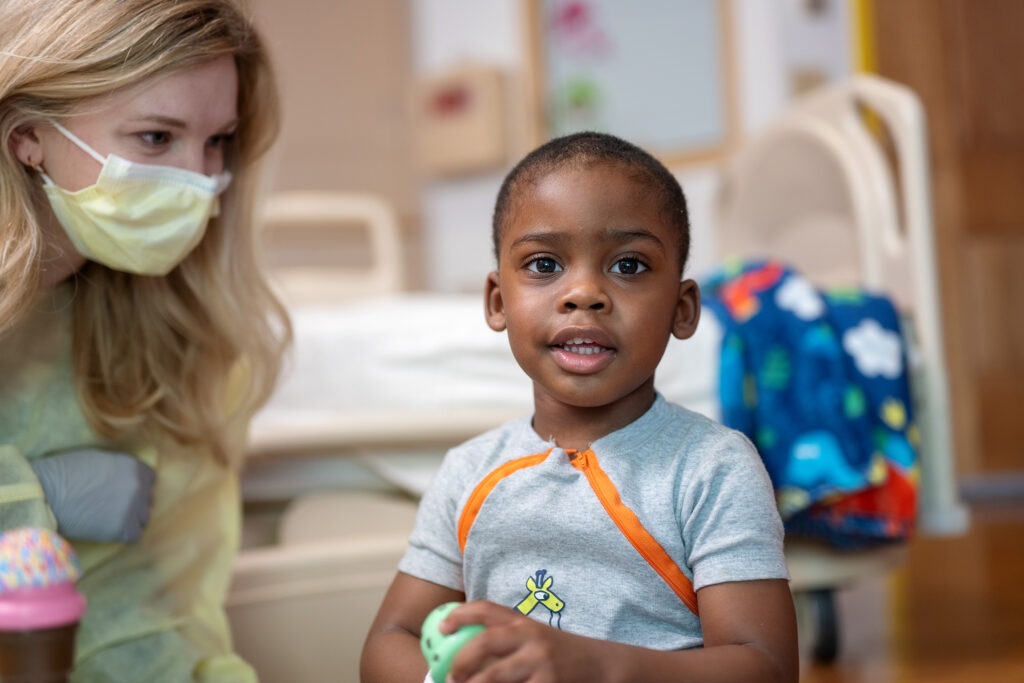Leon and his twin sister, Leigh-Marie, were born in the summer of 2021. When the babies were only about a week old, their parents, Stacy and Leon Sr., received an alarming call from UPMC Children’s Hospital of Pittsburgh. The standard newborn screening test administered to all babies after birth revealed that Leon had sickle cell disease (SCD). A life-limiting genetic blood disorder in which red blood cells take on a crescent or “sickle” shape, SCD causes blockages in blood flow that can lead to pain, anemia, stroke, increased risk of infection, kidney dysfunction, and other serious health issues.
Stacy and Leon Sr. immediately made an appointment with the Division of Pediatric Hematology/Oncology at UPMC Children’s. “From the very beginning, the entire team at UPMC Children’s was incredible,” Stacy shares. “They explained what to expect with Leon’s diagnosis. We could ask them lots of questions without feeling rushed.”
A Regimented Childhood
As an immunocompromised child living during the COVID-19 pandemic, Leon was unable to participate in typical early childhood activities. He further had to avoid extreme temperatures to prevent a pain crisis. “We had to be very regimented,” Stacy says. “Leon didn’t get to experience things that many other kids did. He couldn’t splash in cold water, run outside when it was too hot, or play in the snow with his sister.”
Despite every precaution, by the age of 2, Leon was hospitalized four times for acute chest syndrome (ACS), a life-threatening complication of SCD that causes lung injury and severe breathing difficulties.
A Bold Path Forward
Early in Leon’s diagnosis, the team at UPMC Children’s presented blood and marrow transplantation (BMT) as a potential treatment for Leon. Thanks to decades of research, BMT has become a curative therapy for some
children with sickle cell disease. BMT uses stem cells found in bone marrow, umbilical cord, or peripheral blood from a healthy donor to replace damaged or destroyed marrow. The healthy marrow produces normal red blood cells, effectively eliminating the symptoms and complications of SCD. While BMTs are very promising, they involve risks and will not reverse organ damage that has already occurred.
After doing their research and consulting with Leon’s medical team, Stacy and Leon Sr. decided that BMT offered Leon the best chance to live a long, healthy life.
In late 2023, Leon was approved for a transplant. While Leigh-Marie wasn’t a match, a match was found in donated umbilical cord blood. Leon’s BMT procedure was scheduled for the spring of 2024.
Share Your Story
Are you a grateful family looking to give back to UPMC Children’s? Whether celebrating a medical milestone, honoring the memory of a child, or saying “thank you” to your favorite caregiver, there are countless ways to get involved!
A Difficult Eight Weeks
In April 2024, Leon began an eight-week hospitalization at UPMC Children’s. To prepare for the transplant, he underwent conditioning therapy — including both immunotherapy and chemotherapy — to eradicate his own immune system, thereby preventing his body from rejecting the new stem cells and making space in his bone marrow for new cord blood cells to grow. He remained on the BMT Unit at UPMC Children’s, where the rooms are specially designed to protect patients with weakened immune systems.
Stacy remained bedside with Leon throughout the eight weeks, while Leon Sr. stayed home to care for Leigh-Marie. The period was stressful for the entire family.
“I knew what to expect because the doctors and nurses gave us detailed information, but it was still scary,” Stacy recalls. “I didn’t sleep for the first five days of his hospitalization.”
Transplant Day
On May 16, 2024, Leon received his umbilical cord blood transplant. The procedure was fairly simple, administered in Leon’s hospital room similar to a blood transfusion. The transplant was a success, and after only 13 days, Leon’s body started growing new cells. Over the following days and weeks, he continued to recover.
Stacy and Leon Sr. credit Leon’s physicians, nurses, and staff with getting them through a challenging time. “The doctors were absolutely brilliant. Dr. Paulina Horvei was so thorough, and Dr. Paul Szabolcs was great.
Psychologist Dr. Amy Elizabeth Tiberi created a detailed routine for us, which was really helpful. We were so blessed.”
As Leon’s immune system strengthened in those days following the transplant, Stacy was able to get him out of the hospital room to enjoy some of the amenities available. They visited donor-funded resources like the Howard Hanna Healing Garden and the medical-free playroom and took walks throughout the hospital. “The staff made everything as comfortable as possible for us,” Stacy shares. “And Leon handled the whole experience like a champ.”
Life Without Limits
After 56 days in the hospital, Leon was discharged home. Today, Leon’s bloodwork shows no evidence of sickle cell disease! He is effectively cured.
In the time since his discharge from the hospital, Leon has been enjoying the sort of activities previously out of reach. “He’s a different kid now,” Stacy shares. “I thought he was laid back, calm, but he was actually in pain. Now, he’s running, jumping, playing with his sister — he has so much energy!”
Reflecting on their journey, Stacy emphasizes the importance of philanthropy. “Giving to pediatric hematology and BMT is so needed,” she says. “We had an incredible experience at UPMC Children’s, and we have a whole community of people to thank for that.”


